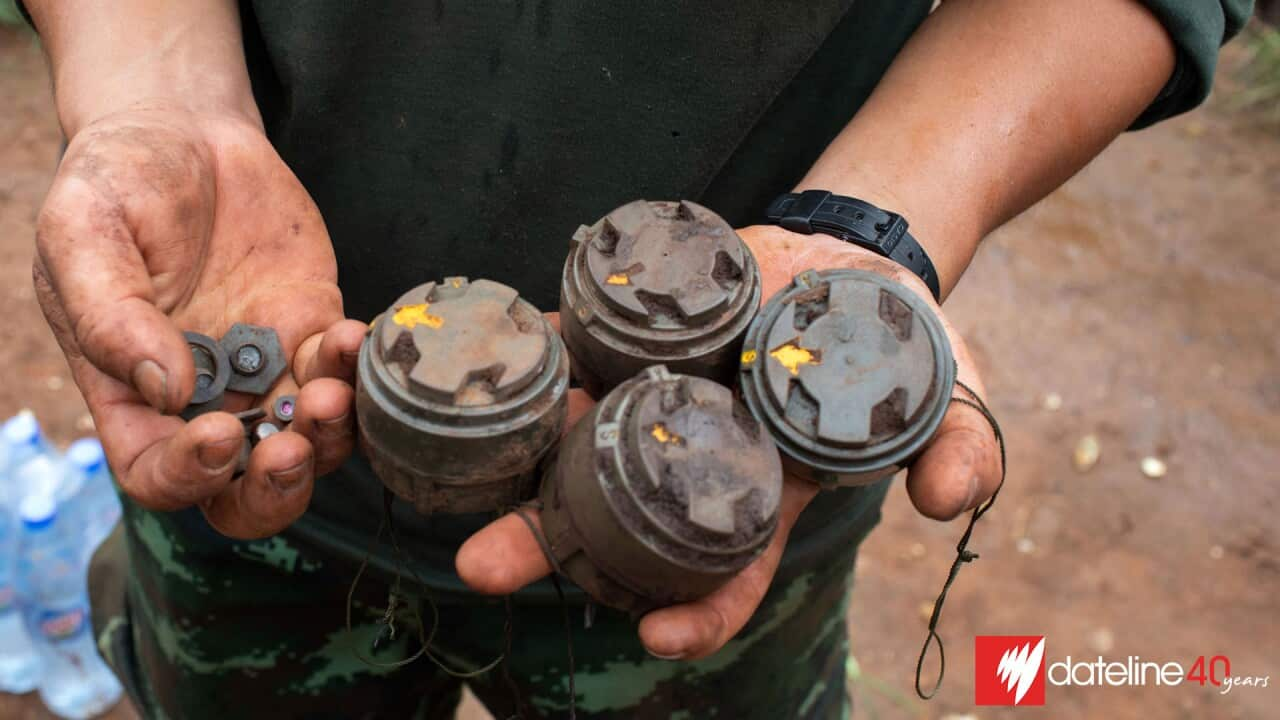A powerful earthquake that struck Myanmar on Friday has killed over 1,000 people and injured hundreds more, authorities said, toppling buildings and wrecking infrastructure across a wide area, including a skyscraper under construction in neighbouring Thailand.
Much of the devastation was in Mandalay, the country's second-largest city, which lies close to the epicentre.
At least 1,002 people were killed and nearly 2,400 injured in Myanmar, the ruling junta said in a statement. Around 10 more deaths have been confirmed in Bangkok.
But with communications badly disrupted, the true scale of the disaster is only starting to emerge from the isolated military-ruled state, and the toll is expected to rise significantly.
A Chinese rescue team arrived in Myanmar's commercial capital of Yangon
Where did the quake hit?
The 7.7-magnitude quake hit northwest of Myanmar's Sagaing on Friday at a shallow depth of 10 kilometres (six miles).
It was followed minutes later by a powerful 6.7-magnitude aftershock and a dozen smaller tremors.
The quake was felt across the region, with shaking reported from India to the west and China to the east, as well as Cambodia and Laos.
The quake hit along the Sagaing Fault that runs from the coast to Myanmar's northern border, according to earthquake scientists Judith Hubbard and Kyle Bradley.
What has the damage been?
The number of people killed in Myanmar was 1,002, the military government said on Saturday, up sharply from initial state media reports of 144 dead on Friday.
In Thailand, 10 people were killed in Bangkok, most in the collapse of an under-construction skyscraper.

The powerful quake has killed 140 people and counting, while destroying infrastructure, homes and transport networks. Source: SIPA USA / Teera Noisakran
Rescue operations continued throughout the night, though it was proving complicated to pick through the unstable rubble.
A rescue worker from Amarapura, an ancient city and now a township of Mandalay, said the bodies of 30 people had been recovered from collapsed multi-story apartment blocks.
"I have never experienced anything like this before - our town looks like a collapsed city," he said, estimating that about a fifth of the buildings had been destroyed.
State media said the quake caused the collapse of buildings in five cities and towns, as well as a railway bridge and a road bridge on the Yangon-Mandalay Expressway. Images showed the destroyed Ava Bridge over the Irrawaddy River, its arches leaning into the water.
A Mandalay resident said destruction stretched across the whole city, and one neighbourhood, Sein Pan, was on fire.
Roads were damaged, phone lines disrupted and there was no electricity, said the resident, who declined to be named.
At least three people died after a mosque in Taungoo partially collapsed, two witnesses said.
"We were saying prayers when the shaking started... Three died on the spot," one said.
Local media reported a hotel in Aung Ban, in Shan state, crumbled into rubble, with the Democratic Voice of Burma reporting two people had died and 20 were trapped.
What have officials said?
Junta chief Min Aung Hlaing issued an exceptionally rare appeal for international aid on Friday, indicating the severity of the calamity. Previous military governments have shunned foreign assistance even after major natural disasters.
Speaking at the White House later on Friday, United States President Donald Trump said that he had spoken with officials in Myanmar and that his administration would be providing some form of assistance. "We're going to be helping," he told reporters.
Mandalay, with a population of about 1.5 million, is Myanmar's ancient royal capital and the centre of its Buddhist heartland. Rescue workers were trying to reach dozens of monks trapped under rubble in the Phaya Taung Monastery, said the emergency worker in Amarapura. Buildings, bridges and roads were wrecked, residents and local media said.
UN Secretary-General Antonio Guterres said the United Nations was mobilising in Southeast Asia to help those in need.
Zin Mar Aung, the diplomatic spokesperson for the opposition National Unity Government, said fighters from the anti-junta militias known as the People's Defence Forces would provide humanitarian help.
A US government analysis based on the strength and depth of the quake estimated there could be thousands of deaths and severe economic loss, with the Sagaing and Meiktila regions worst hit.




